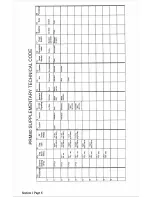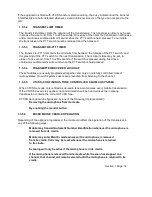
SECTION 1
INTRODUCTION
1.1
PRODUCT DESCRIPTION
The PRM80 series of mobile radio transceivers are primarily, under dash
mounted local controlled simplex radios, for vehicular application.
The design concept utilises an advanced microcomputer controlled frequency synthesizer.
The microcomputer also performs analogue signalling. The selective calling systems
provided meet the requirements of both standard despatch communications and special
systems applications in world-wide private mobile radio markets.
In addition to the tone sequential signalling, continuous tone controlled squelch system
(CTCSS) signalling is provided and includes the reverse tone burst encode feature.
The customization of the microcomputer control is via an electrically erasable programmable
read only memory (EEPROM). The mobile radio may be configured to meet specific
customer requirements by programming the EEPROM via the data port available at the
microphone socket.
An innovative receiver design provides full band coverage without the need for mechanical
tuning. Similarly, a range of broadband transmitter power amplifiers, offering a selection of
power output levels, provide full band coverage without the need to mechanically re-tune.
The local control front panel is available in two versions. One version provides up to 9
channels and control of a limited set of software programmable options. The other version
provides up to 64 channels, and additional buttons and display indicators give the operator
access to a more comprehensive range of features. Both front panels utilise liquid crystal
displays with permanent backlighting.
The PRM80 is constructed with extensive use of miniature surface mounted components.
The compact electro-mechanical design interconnects the various circuit functions without
the use of point to point wiring, making the PRM80 a true "wireless" radio.
1.1.1
Product Variants
The main unit of the PRM80 transceiver is available in a number of uniquely configured
hardware variants. These variant related items are listed below.
i)
Channel Capacity
9-channel or 64-channel
(Different front panel and memory capacity).
Section 1 Page 1





































